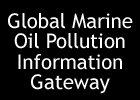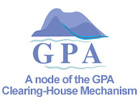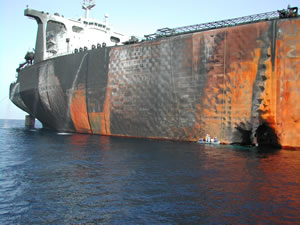|
nternational
actors and agreements in the region
 The
Red Sea & Gulf of Aden have been designated as a
Special Area for the purpose
of Annex I to MARPOL
73/78
The
Red Sea & Gulf of Aden have been designated as a
Special Area for the purpose
of Annex I to MARPOL
73/78
 See
Global action and Global
actors.
See
Global action and Global
actors.
 UNEP
Regional Seas Programme. ••>
UNEP
Regional Seas Programme. ••>
 UNEP Global programme of action for the protection of
the marine environment from land-based activities (UNEP
GPA). ••>
UNEP Global programme of action for the protection of
the marine environment from land-based activities (UNEP
GPA). ••>
 UNEP
Regional Office for West Asia (ROWA). ••>
UNEP
Regional Office for West Asia (ROWA). ••>
 UN Economic and Social Commission for Western Asia (ESCWA).
••>
UN Economic and Social Commission for Western Asia (ESCWA).
••>
 International
Coral Reef Initiative and other organizations and
networks on
the threats to coral reefs, including the effects of
litter/debris.
International
Coral Reef Initiative and other organizations and
networks on
the threats to coral reefs, including the effects of
litter/debris.
Regional
conventions, agreements, action plans and actors
 Regional
Convention for the Conservation of the Red Sea and Gulf
of Aden Environment (Jeddah
Convention) • Regional
Organisation for Conservation of the Environment of
the Red Sea and Gulf of Aden (PERSGA).
••>
Regional
Convention for the Conservation of the Red Sea and Gulf
of Aden Environment (Jeddah
Convention) • Regional
Organisation for Conservation of the Environment of
the Red Sea and Gulf of Aden (PERSGA).
••>
 The
Strategic Action Programme for the Red Sea and Gulf
of Aden • PERSGA.
••>
The
Strategic Action Programme for the Red Sea and Gulf
of Aden • PERSGA.
••>
 Gulf of Aqaba Environmental Action Plan. ••>
Gulf of Aqaba Environmental Action Plan. ••>
 Jeddah Memorandum of Understanding • Jeddah Declaration.
••>
Jeddah Memorandum of Understanding • Jeddah Declaration.
••>
 Council of Arab Ministers Responsible for the Environment
(CAMRE) • Abu Dhabi Declaration. ••>
Council of Arab Ministers Responsible for the Environment
(CAMRE) • Abu Dhabi Declaration. ••>
 Indian
Ocean memorandum of understanding on port state control.
••>
Indian
Ocean memorandum of understanding on port state control.
••>
 African
Development Bank.
••>
African
Development Bank.
••>
|
 |
Regional
reports on the state of the marine and coastal environment
  PERSGA in cooperation with UNEP GPA: Assessment
of Land-based Sources and Activities Affecting the Marine
Environment in the Red Sea and Gulf of Aden.
PERSGA in cooperation with UNEP GPA: Assessment
of Land-based Sources and Activities Affecting the Marine
Environment in the Red Sea and Gulf of Aden.
 UNEP
Regional Office for West Asia: State
of the Environment in West Asia: "In
West Asia, the challenges that are associated with marine
and coastal issues include oil pollution, sewage and
other land-based effluents, the physical alternation
of coastal areas, including land-filling, dredging,
and modification of river course". [...] The regional
marine environment has been subjected to pressures from
an unprecedented rate of industrial and urban growth,
over 75 per cent of which has been in the coastal areas."
UNEP
Regional Office for West Asia: State
of the Environment in West Asia: "In
West Asia, the challenges that are associated with marine
and coastal issues include oil pollution, sewage and
other land-based effluents, the physical alternation
of coastal areas, including land-filling, dredging,
and modification of river course". [...] The regional
marine environment has been subjected to pressures from
an unprecedented rate of industrial and urban growth,
over 75 per cent of which has been in the coastal areas."
 UNEP
Regional Seas: "The major threats to the marine
environment of the Red Sea and Gulf of Aden are related
to land-based activities. These include urbanization
and coastal development (for example, dredge and fill
operations), industries including power and desalination
plants and refineries, recreation and tourism, waste
water treatment facilities, power plants, coastal mining
and quarrying activities, oil bunkering and habitat
modification such as the filling and conversion of wetlands
- - - Coastal industries in the region include power
and desalination plants, refineries, fertilizer manufacturers
and chemical plants. These industries and their effluents
(oil, organic pollutants, heavy metals, heated brine
and cooling water) are considered important problems
in every country of the region."
UNEP
Regional Seas: "The major threats to the marine
environment of the Red Sea and Gulf of Aden are related
to land-based activities. These include urbanization
and coastal development (for example, dredge and fill
operations), industries including power and desalination
plants and refineries, recreation and tourism, waste
water treatment facilities, power plants, coastal mining
and quarrying activities, oil bunkering and habitat
modification such as the filling and conversion of wetlands
- - - Coastal industries in the region include power
and desalination plants, refineries, fertilizer manufacturers
and chemical plants. These industries and their effluents
(oil, organic pollutants, heavy metals, heated brine
and cooling water) are considered important problems
in every country of the region."
 UNEP GPA: Red
Sea and Gulf of Aden (brief description of environmental
state, priority issues, etc.).
UNEP GPA: Red
Sea and Gulf of Aden (brief description of environmental
state, priority issues, etc.).
 UNEP:
Global
Environment Outlook 3 (GEO3). Coastal and marine
areas.
UNEP:
Global
Environment Outlook 3 (GEO3). Coastal and marine
areas.
 University
of Rhode Island: Large Marine Ecosystems (LME): The
region includes one complete Red
Sea LME, and the Gulf of Aden as part of the Arabian
Sea LME.
University
of Rhode Island: Large Marine Ecosystems (LME): The
region includes one complete Red
Sea LME, and the Gulf of Aden as part of the Arabian
Sea LME.
Private
sector and NGOs actors and initiatives
 Oilwatch. ••>
Oilwatch. ••>
 International Tanker Owners Pollution Federation (ITOPF).
••>
International Tanker Owners Pollution Federation (ITOPF).
••>
 International Directory of Oil Spill Cleanup Contractors
and Response Organisations. ••>
International Directory of Oil Spill Cleanup Contractors
and Response Organisations. ••>
 International Petroleum Industry Environmental Conservation
Association (IPIECA). ••>
International Petroleum Industry Environmental Conservation
Association (IPIECA). ••>
|



